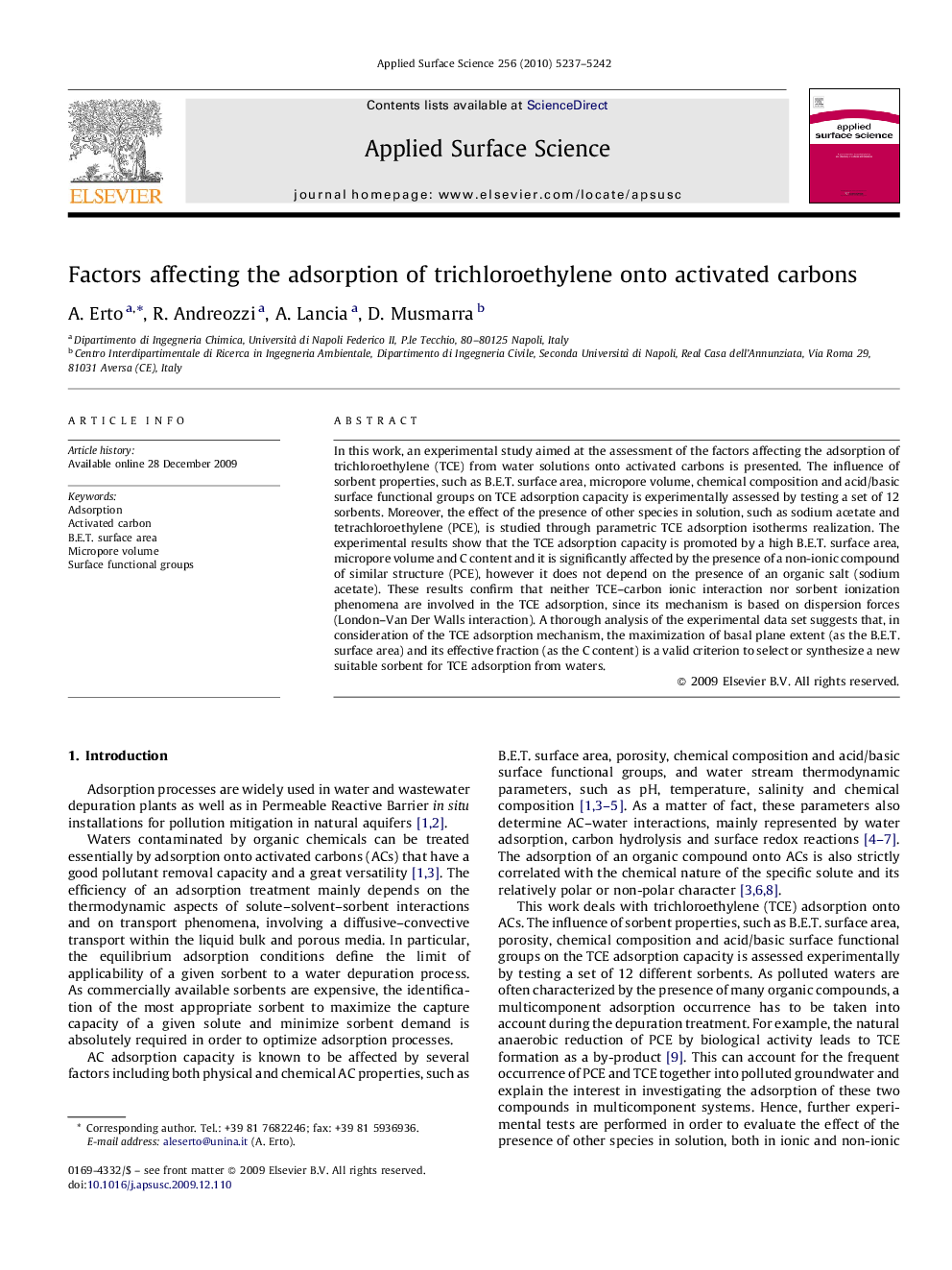| Article ID | Journal | Published Year | Pages | File Type |
|---|---|---|---|---|
| 5357852 | Applied Surface Science | 2010 | 6 Pages |
Abstract
In this work, an experimental study aimed at the assessment of the factors affecting the adsorption of trichloroethylene (TCE) from water solutions onto activated carbons is presented. The influence of sorbent properties, such as B.E.T. surface area, micropore volume, chemical composition and acid/basic surface functional groups on TCE adsorption capacity is experimentally assessed by testing a set of 12 sorbents. Moreover, the effect of the presence of other species in solution, such as sodium acetate and tetrachloroethylene (PCE), is studied through parametric TCE adsorption isotherms realization. The experimental results show that the TCE adsorption capacity is promoted by a high B.E.T. surface area, micropore volume and C content and it is significantly affected by the presence of a non-ionic compound of similar structure (PCE), however it does not depend on the presence of an organic salt (sodium acetate). These results confirm that neither TCE-carbon ionic interaction nor sorbent ionization phenomena are involved in the TCE adsorption, since its mechanism is based on dispersion forces (London-Van Der Walls interaction). A thorough analysis of the experimental data set suggests that, in consideration of the TCE adsorption mechanism, the maximization of basal plane extent (as the B.E.T. surface area) and its effective fraction (as the C content) is a valid criterion to select or synthesize a new suitable sorbent for TCE adsorption from waters.
Related Topics
Physical Sciences and Engineering
Chemistry
Physical and Theoretical Chemistry
Authors
A. Erto, R. Andreozzi, A. Lancia, D. Musmarra,
